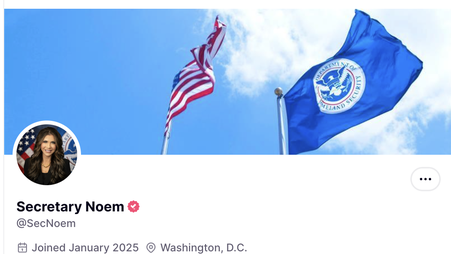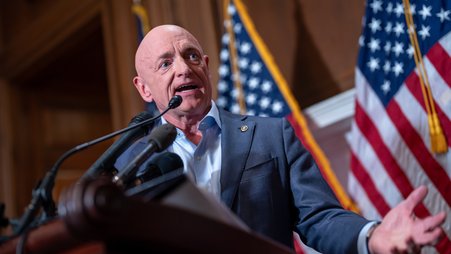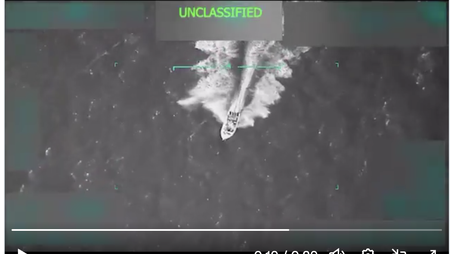The government has too many secrets, and most of them shouldn’t be secrets in the first place.
How much information is overclassified? Our best guesses range from 75% to 90%. If the conservative estimate that the classification system costs $18 billion a year is taken at face value, this means the government could be overcharging taxpayers nearly $16 billion annually to hide information that doesn’t need protection (like the sex of the dog that participated in the raid to kill ISIS leader Abu Bakr al-Baghdadi, which U.S. Special Operations Command deemed classified national security information).
It also means the government is overclassifying information whose release would be in the public interest (like the photos the U.S. Marines took in the aftermath of killing 24 unarmed people in 2005 in Haditha, Iraq).
A new bipartisan bill from the Senate Committee on Homeland Security and Government Affairs attempts to fix this. Introduced by Chairman Gary Peters, D-Mich., and John Cornyn, R-Texas, the Classification Reform for Transparency Act of 2024 has a lot to like — but it falls short in a crucial way: There is currently no way to tell if the bill would actually reduce the number of unnecessary secrets, because we don’t know how many there are in the first place.
The good news
The classification bill would, among other things:
- Establish an interagency task force that would clearly define the terms used to designate classification categories. This is important because most classification decisions are subjective, relying on vague interpretations of “damage to national security” to bolster their claims. Tighter and more precise definitions of the terms used to justify secrecy decisions should result in fewer secrets.
- Create consequences for federal employees who willfully classify information that should not be classified, as well as cash incentives for people who file good-faith classification challenges. This should help address the current culture of risk avoidance, which has created a situation where there are no carrots to promote good classification challenges, and few meaningful sticks to avoid overclassifying.
- Call for explicit funding for classification and declassification programs. This is a big step in the right direction because the government currently has no reliable figures for what the classification system truly costs. The bill would address that problem by requiring agencies to assess and report on estimated expenditures for classification programs, and calling for at least 10% of these totals to be dedicated to declassification efforts.
The not-so-good news
The intent of the bill is to reduce the number of secrets the government generates. Unfortunately, we don’t actually know how many documents are classified across the government, and there are no reporting requirements in the bill that would allow us to see if the government was hiding more or less information from one year to the next. This undercuts the bill’s intentions.
Take, for example, the bill’s tasking of the interagency task force mentioned above to create a plan to phase out the “confidential” classification category, which is the lowest of the three classification categories, below “secret” and “top secret.”
The hope is that by removing the confidential category, fewer things would be classified. It is possible, however, that if the confidential level were phased out, some agencies would simply classify more information at the higher secret level, rather than classifying less information to begin with. To make sure this doesn’t happen, we would need to know how many records are currently classified, and at what level they are classified.
This is where we run into trouble.
How to fix it
The Information Security Oversight Office, which oversees government-wide compliance with the security classification program, used to report on the number of classification decisions made across the government every year. In fiscal year 2017, the last year the data is available, it reported 58,501 original classification decisions made across the government (1,398 top secret, 48,056 secret, and 9,047 confidential). In addition, 49 million derivative classification decisions were made (9,615,440 top secret, 36,115,33 secret, and 3,710,737 confidential).
Original classification decisions are those made by a designated agency official who is responsible for deciding if something should be classified and at what level, and derivative decisions are made by agency employees who paraphrase, restate, or otherwise repurpose that information.
Unfortunately, ISOO has not reported on the number of government-wide classification decisions — by classification level or otherwise — in over five years. This is ostensibly because the data it received from agencies on the number of classification decisions they were making was so poor, and so inconsistent from one agency to the next, that ISOO found reporting these figures to be unreliable.
Put more simply: The government doesn’t know how many secrets it has, and there is currently no quantifiable way to tell if eliminating a classification category — or enacting any of the bill’s other components — would reduce the number of secrets agencies generate.
Sen. Peters’ news release for his bill acknowledges this information gap, suggesting 50 million new classified records are created every year, but this projection is likely based on historical trends that do not adequately account for the explosion of electronic records, and the impact this has on the number of derivative classification decisions in particular.
Congress should work with officials at ISOO as part of this legislative effort to understand why agencies don’t — or can’t — accurately and consistently track the number of classification decisions they make, and chart a path forward that ensures that agencies can successfully do so.
Without this practical metric to measure against, we would be hard-pressed to assess the impact of the necessary and well-intended legislation.





